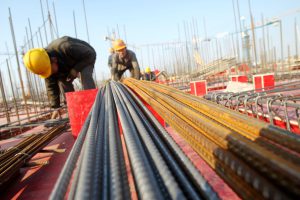In 2012, the urban proportion of China’s population passed the 50% mark. Earlier this year, Premier Li Keqiang urged deeper urbanisation as an engine of China’s future economic growth. The assumption underlying this economic strategy is that urbanisation will increase the level of consumption and investment in infrastructure. While debate continues on whether this assumption is valid, less attention has been given to the environmental consequences of rapid urbanisation.
Urban growth is closely associated with increasing consumption of materials and energy, emissions of pollutants (not least CO2 emissions), encroachments on natural areas and agricultural land which may result in landscape fragmentation, loss of biodiversity and land for food production. Over the past two decades, most Chinese cities have experienced rapid expansion. In the 1990s the amount of urban land in China increased by 30%, of which 80% was converted from farmland. According to the National Bureau of Statistics of China, nearly 10 million hectares of farmland was lost between 2000 and 2009. With further urbanisation, the tension between preserving land for agriculture and land demands for urban growth will increase.
China’s strategy to tackle its environmental problems is in line with ecological modernisation theory, where decoupling of economic growth from negative environmental impacts is a key element. Hangzhou, capital of Zhejiang province, is a city that has had a good environmental reputation. Since the 1990s, Hangzhou has experienced rapid economic growth and urbanisation. Its urban housing stock increased considerably from 25.8 million m2 to 107.3 million m2 between 1991-2008.
Increasing land use efficiency has been an important long-term goal at different levels of planning in Hangzhou, while regulations of energy conservation for residential buildings have been consecutively tightened since the 2000s. But to what extent has such a rapid growth in the housing stock impacted on the environment?
In Hangzhou, housing stock growth has only been weakly decoupled from residential energy consumption; urban economic growth has also been weakly decoupled from land consumption. This implies that absolute residential energy consumption and land consumption for urban expansion have increased. Between 1991-2008 built-up areas grew from 327 km2 to 868 km2. Residential energy consumption in 2008 was more than twice that of 1991. Environmental gains from eco-efficiency technologies and policies have been offset by growth in the volume of housing stock.
Although renewables have been proposed as a solution to meeting growing residential energy demand, at present they provide only a small proportion of energy needed for building operations in Hangzhou (and nationwide). The time it will take for a new technology, e.g. solar energy, to be widely applied in society may exceed the time horizon within which we will encounter the limit of fossil fuel usage. Arguably, this places a cap on continual growth in energy consumption.
Furthermore, the development of renewables entails the production of related equipment and infrastructure. The ‘rebound effect’ caused by the application of renewables and other energy efficiency technologies, may induce households to consume more floor space and energy than would otherwise be the case.
Even though Chinese cities on average have a higher land utilisation efficiency than US and European cities, land use efficiency in Hangzhou has decreased since the 1990s. In the face of the challenge of a growing housing stock, when the opportunities for densification are used up, it is impossible to avoid converting undeveloped land to accommodate building growth, no matter how efficiently the land is used.
The departure point of the degrowth paradigm is the belief that human economic growth cannot exceed the ‘carrying capacity’ of its ecosystem. The theory of degrowth recommends a reduction in the overall economy but it is more than simply a challenge to the idea of growth. The goal of human development is the pursuit of well-being, ecological sustainability, and social equity; what happens to GDP is of secondary importance.
China faces the huge challenge of improving the living standard of a growing urban population through increased construction of buildings and infrastructure. So it could be argued that China still has a moral right to develop. But instead of blindly emphasisng urbanisation as a way to stimulate economic growth, questions like ‘growth for how long’, ‘growth for whom’, and ‘growth for what’ should be asked. There are also three key points to keep in mind.
Firstly, economic growth in China cannot last forever. Chinese consumption levels will reach those of OECD countries within a couple of decades if present growth rates continue. The limited natural resources may not support such a global affluence level.
Secondly, the richest parts of China will reach OECD levels much sooner than the rest. If China’s total resource consumption is to be kept below an ecologically sustainable limit, priority for growth should be channeled to poor regions in inland China and low-income population groups. The gaps in affluence level across the country require differentiated regional development strategies. What’s needed are coordinated development strategies which pursue economic degrowth in the wealthy cities and regions and fuel the growth potential in central and western China .
Degrowth in rich cities in the Chinese context refers to a combination of ‘selective degrowth’ and ‘selective improvement’. The former could include degrowth in the size of the population, urban sprawl, high-speed transport infrastructure, consumption of cars and dwelling, and other material items. The selective degrowth should arguably accompany selective improvement of social services and welfare for the deprived within the city, including affordable housing, medical care, education opportunities and mass transit.
Thirdly, instead of a single-minded commitment to economic growth, future growth should be carefully assessed, and only accepted to the extent that it is beneficial to social equity, improvement in education and health care, social stability, and other dimensions of human development.





